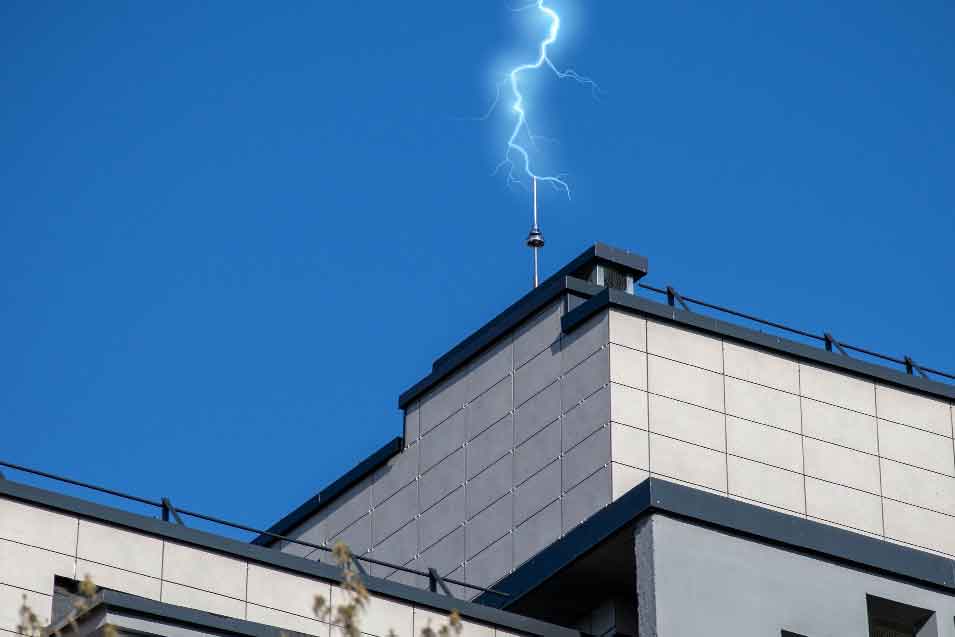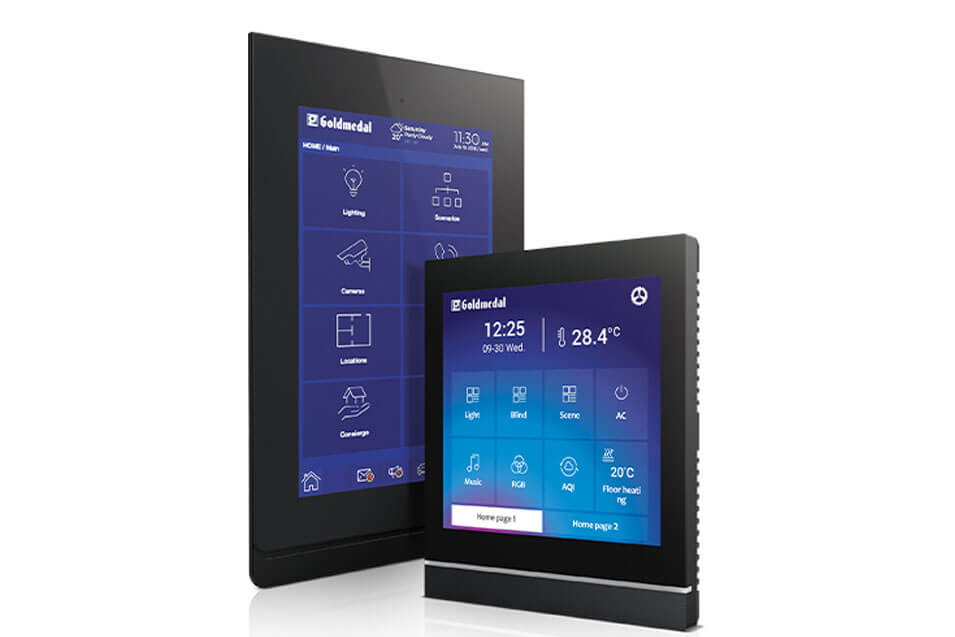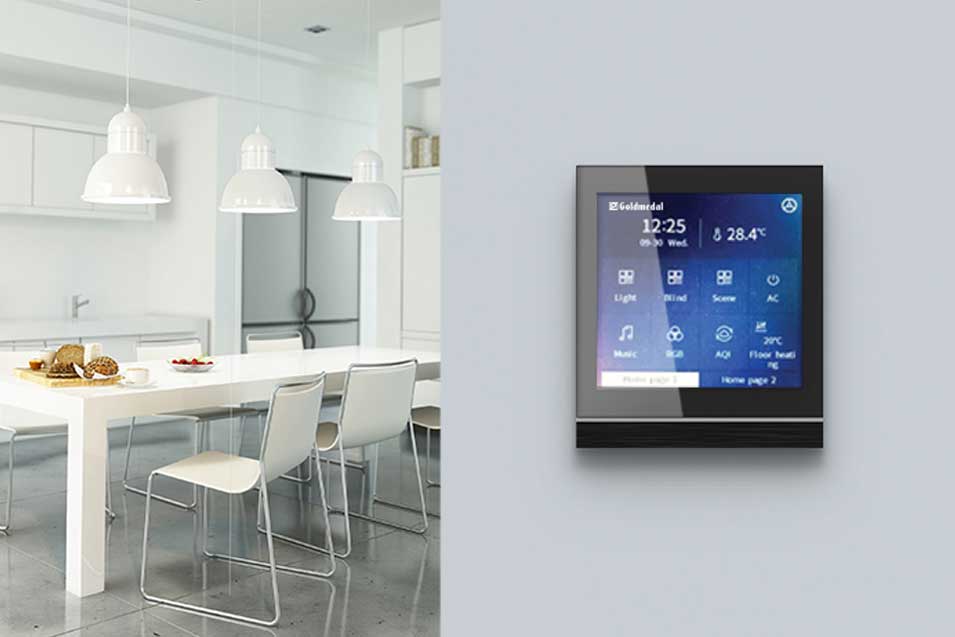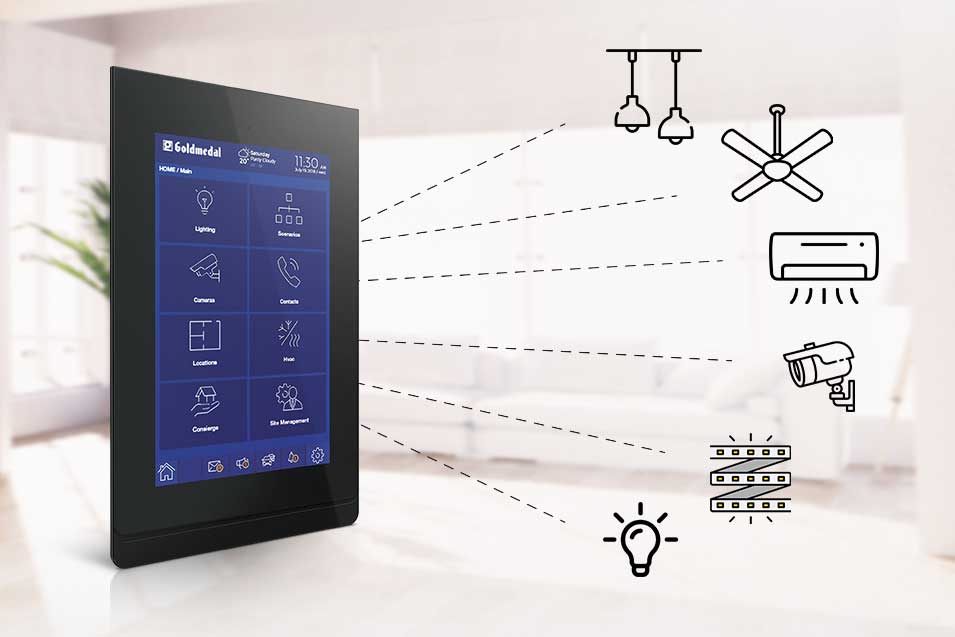
Guide to Lightning Protection Systems for Homes
28th October 2025 | Written By: Rika Aash | Read Time: 3min | Last Updated: 28th October 2025
Thanks to global warming, India is increasingly witnessing drastic climatic changes which includes intense thunderstorms and lightning activity. Frequent lightning strikes and sudden power surges are dangerous; they can severely damage infrastructure, cause fires, disrupt power systems, and more. To ensure safety, it is important to install lightning protection systems for homes. In this blog, we will understand in detail the purpose, components, functions, and benefits of a lightning protection system.
Purpose of Lightning Protection System
The lighting protection systems are designed to capture lightning strikes and conduct the current produced by lightning safely to earth. It dissipates the energy into the ground and protects against the secondary effects of lightning. They are designed to protect buildings, electronic systems, and other infrastructure.
Key components of Lightning Protection System
A lightning protection system consists of air terminals (rods), down conductors, a grounding system, surge protection devices (SPDs), and bonding to safely intercept, channel, and dissipate a lightning strike into the ground.
- Air terminals: Known as lightning rods, these are pointed rods installed at the highest point of homes or buildings. They capture lightning strikes and direct the current to the ground through a low-resistance path.
- Down conductors: These conductors connect the terminals to the ground system. They ensure safe passage of lightning energy from the air terminals to the ground.
- Grounding system: A network of electrodes buried in the earth that distributes the electrical current into the ground.
- Surge protection devices: These electronic devices are installed to protect internal electrical systems from surges caused by lightning.
- Bonding: This refers to connections that ensure all conducive parts of the building are at the same electrical potential to prevent sparks.
Guide to installing lightning protection system
To install a lightning protection system correctly, hire professional experts who is well versed in local and national standards. Here is a guide to understand installation procedure:
- Risk assessment: Before going ahead with installation, the professional will review your building or structure to identify weak points and determine the level of protection needed.
- Component installation: After reviewing the building, lightning rods, down conductors, and grounding systems are carefully installed for maximum performance.
- Testing and commissioning: Thorough testing of all components ensures that the system works smoothly.
- Maintenance: Post installation, the system should be regularly inspected for wear, corrosion, or damage in components through regular inspections. Timely replacement of damaged components will ensure smooth functioning of the system for years. Grounding resistance should be regularly tested to meet safety standards.
Though lightning protection systems are gaining popularity in India, many industries and buildings are still ignorant of lightning threats and the benefits offered by the lightning protection systems. The cost of installation is also one of the reasons why lightning protection systems are yet to gain momentum in India. However, with the advancement in technology, advanced lightning protection systems like IoT-enabled smart systems that monitor their condition accurately represent the future. More eco-friendly materials for the grounding system are also on the way for lightning protection systems.

Frequently Asked Questions (FAQs) :
- Q1. What are the signs that a home needs a lightning protection system? Frequent thunderstorms, tall structures, metal roofs, or homes located in open or elevated areas are clear signs that lightning protection may be needed. Additionally, if your house contains sensitive electronics or a history of electrical surges, installing a lightning protection system can help safeguard both the structure and its occupants.
- Q2. How much does it cost to install a lightning protection system in India? The cost of installing a lightning protection system in India depends on the building size, structure type, and level of protection required. It typically ranges from ₹25,000 to ₹1.5 lakh, while for large commercial or industrial setups, the cost can go up to ₹3–5 lakh.
- Q3. Can solar panel systems be protected using lightning protection systems? Yes, solar panel systems can and should be protected using lightning protection systems. These systems safeguard panels and connected equipment from voltage surges or direct lightning strikes, ensuring safety and longevity.
- Q4. What happens if lightning strikes a house without protection? If lightning strikes a house without protection, the massive electrical surge can travel through wiring, plumbing, or metal structures, causing fires, power surges, or severe structural damage. It can also destroy electrical appliances and pose serious safety risks to anyone inside the home.
- Q5. Can homeowners install lightning protection systems themselves? Homeowners should not attempt to install lightning protection systems on their own, as the process requires specialised knowledge of grounding, surge protection, and safety standards. It’s always best to hire a certified professional to ensure proper installation and reliable protection.




